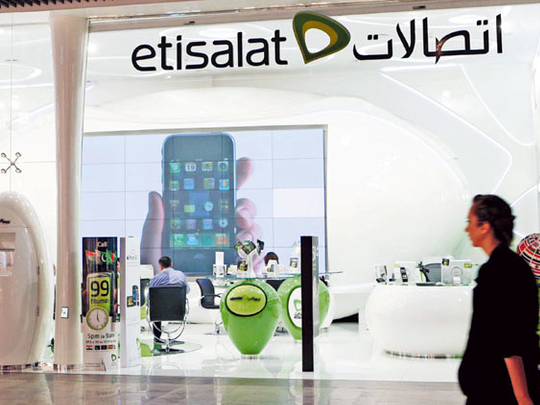
For a long time the UAE and the region were blissfully unmarked by the battle of the telecoms that swept through Europe and Asia. But as operators increasingly launch bundle deals for various customers, is the UAE moving from being retailer-driven to being an operator-driven market?
Neeraj Seth thinks so. “Today, we are no longer in a retail market and are steadily shifting towards an operator-led one,” says the Senior Marketing Manager — Middle East and North Africa (Mena) at HTC. He now expects greater integration of manufacturers and operators. “An example is our successful partnership with Etisalat for the launch of the first all-in-one quad-core smartphone, the HTC One X.” Such deals have been in place for BlackBerry and iPhone for some time now.
Operators now recognise the international trend among manufacturers and operators and are eager to provide opportunities for manufacturers to showcase their devices, leaving consumers with a broad and fair selection.
Typically in both North Africa and Europe, 80 per cent (if not more) of handsets sales are channelled through operators and bundled with various pricing plans, Hicham Fadel, Senior Associate with Booz & Company, tells GN Focus.
But here the situation is reversed with almost 80 per cent of handsets sales taking place through retailers. This was because operators in the region did not have the legal means to recoup losses from terminated handset contracts and hence would risk ending up with increasing bad debts on their balance sheet. “Definitely not the case in North Africa and Europe where customers would risk bad credit history in case of default,” says Fadel. “However, there is a slow but steady shift and we can clearly see operators placing more and more emphasis on smartphones and other smart devices by positioning them as a core element of the consumer product offering.”
Key reasons
The main drivers for this shift, Fadel says, are tectonic movements in the market, with Mena seeing a significant increase in consumer demand in the past two years for smartphones that offer a better user experience in the form of enhanced communications, richer content, and more powerful social networking. It’s a major driver for the monetisation of investment in broadband networks. Added to this was the fact that operators in the region suffered from the commoditisation of traditional communications services and stagnating revenues from core services. “This struggle to maintain profitability deepened a lingering innovation vacuum and a looser grip over strategic customer segments. The only avenue of growth for these operators was to fuel demand for data — and they realised that smartphones and smart devices were a major pillar in this quest,” he says.
With this came the realisation that operators needed to find ways to lock in high-end and strategic customers into contracts lasting at least a year or two, which resulted in a spurt in attractive pricing plans on demand.
Divergent view
Izzat Kittaneh, Business Manager, Mena, Sony Mobile Communications, holds a different view and maintains that the focus is still the phone in this market and will continue to be so. “Research has shown us that if the phone is appealing enough, consumers will come for this rather than any offer. Here it is still a handset-driven market, unlike the West where the operator invests in the handset and then subsidises the handset — here they don’t need to take on that double expense.”
Matthew Willsher, Chief Marketing Officer, Etisalat, doesn’t envisage a fundamental shift anytime soon either. “Customers here don’t want long contracts; even a 12-month contract is considered long whereas in other markets operators lock in consumers for as long as 24-36 months, enabling them to offer larger upfront discounts. In the UAE this is not a major business for us and service revenue is where we are focusing.”










